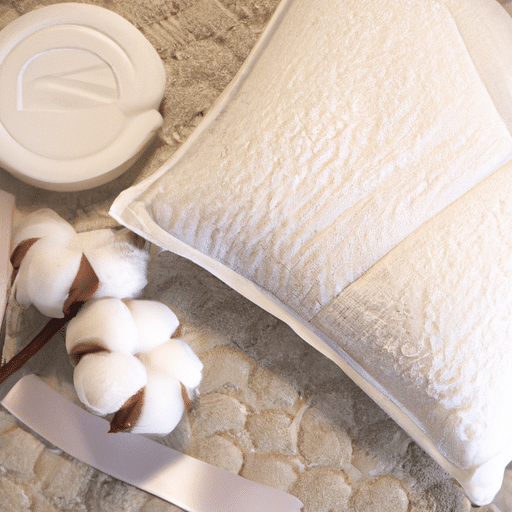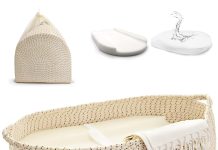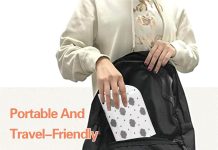In the world of baby care products, organic options have gained considerable popularity in recent years for their perceived benefits. One product that has caught the attention of many parents is the organic changing pad. But are these pads truly better for baby’s delicate skin? Let’s explore the potential advantages of organic changing pads and whether they live up to the hype.
Review contents
Introduction
Welcome to our comprehensive article on organic changing pads! As parents, we always strive to provide the best for our little ones, and this includes taking care of their delicate skin. In recent years, there has been a growing interest in organic products, and changing pads are no exception. In this article, we will explore what organic changing pads are, their benefits and potential drawbacks, how to choose the best one, and other considerations for your baby’s skin health. So let’s dive in and discover whether organic changing pads are truly better for our baby’s skin!
What are Organic Changing Pads?
Definition of organic changing pads
Organic changing pads, as the name suggests, are changing pads made from organic materials. These materials are grown and processed without the use of synthetic chemicals or pesticides. Organic changing pads are designed with a focus on sustainability, durability, and providing a healthy environment for your baby.
Materials used in organic changing pads
The materials used in organic changing pads vary but typically include organic cotton, bamboo, or a blend of natural fibers. These fibers are often grown without genetically modified organisms (GMOs) and are free from harmful chemicals like pesticides, herbicides, and artificial dyes. This ensures that your baby is not exposed to any potentially harmful substances.
Difference between organic and non-organic changing pads
The main difference between organic and non-organic changing pads lies in the materials used and the manufacturing process. Non-organic changing pads often contain synthetic materials, such as polyester or polyurethane foam, which may release toxins or irritants over time. On the other hand, organic changing pads prioritize natural and eco-friendly materials, making them a healthier choice for your baby.
Benefits of Organic Changing Pads
Hypoallergenic and gentle on baby’s skin
One of the primary benefits of organic changing pads is their hypoallergenic nature. The absence of chemicals and synthetic materials reduces the risk of skin irritations and allergies. Organic materials, such as organic cotton or bamboo, are known for their softness and gentle touch. This ensures that your baby’s delicate skin is well-protected, even during diaper changes.
Reduced risk of irritation and rashes
By using organic changing pads, you can greatly reduce the risk of skin irritation and diaper rashes. Traditional changing pads may contain dyes or chemicals that can aggravate sensitive skin. Organic changing pads, on the other hand, are made from natural materials that are less likely to cause irritation or inflammation. This can provide your baby with a more comfortable and soothing diaper changing experience.
Chemical-free and non-toxic
A significant advantage of organic changing pads is their commitment to being chemical-free and non-toxic. Traditional changing pads often contain harmful substances like PVC, phthalates, or flame retardants. These chemicals can potentially leach into your baby’s skin and may have long-lasting health effects. By opting for organic changing pads, you can be confident that you are providing a safe and healthy environment for your little one.
Better for the environment
Choosing organic changing pads not only benefits your baby’s skin but also contributes to a healthier planet. Organic materials are cultivated using sustainable practices that minimize negative impacts on the environment. Additionally, the absence of synthetic chemicals means less pollution during the manufacturing process. By making this eco-conscious choice, we can help create a greener and cleaner world for future generations.
Improved breathability and airflow
Organic changing pads often offer improved breathability and airflow, thanks to their natural fibers. Materials like organic cotton allow air to circulate, preventing the build-up of moisture and reducing the risk of bacterial growth. This breathability helps keep your baby’s skin dry and comfortable during diaper changes, minimizing the chances of diaper rash or fungal infections.
Soft and comfortable for baby
Comfort is essential when it comes to choosing the right changing pad for your baby. Organic changing pads are prized for their softness and luxurious feel. Natural materials like organic cotton provide a gentle and cozy surface for your baby during diaper changes. The softness can even offer some added comfort during those late-night trips to the changing table, ensuring your baby stays calm and relaxed.
Potential Drawbacks of Organic Changing Pads
Higher cost compared to non-organic options
One potential drawback of organic changing pads is their higher cost compared to non-organic options. The use of organic materials and sustainable manufacturing processes often translates to a higher price tag. However, it’s important to consider the long-term benefits to your baby’s skin and the environment. Investing in an organic changing pad may be a worthwhile expense for those who prioritize sustainability and baby’s well-being.
Limited design and color options
Another minor drawback of organic changing pads is the limited variety of designs and colors available. Non-organic changing pads often come in a wide range of patterns and prints, allowing for more customization and personalization. Organic options, while still offering some design choices, may not provide as many options to suit your desired aesthetic. However, this small trade-off in design versatility can be outweighed by the benefits of choosing organic materials.
May require more frequent washing
Organic changing pads, depending on the materials used, may require more frequent washing compared to non-organic options. Natural fibers like organic cotton or bamboo may be more prone to staining or absorbing liquids, necessitating more frequent cleaning. However, with proper care and maintenance, this should not pose a significant inconvenience. Regular washing ensures a clean and hygienic surface for your baby during diaper changes.
How to Choose the Best Organic Changing Pad
Certifications and standards
When selecting an organic changing pad, it is crucial to look for reputable certifications and standards. Certifications like Global Organic Textile Standard (GOTS) ensure that the product meets specific organic criteria and upholds ethical and ecological standards. By choosing a product with recognized certifications, you can feel confident that you are purchasing a truly organic changing pad.
Materials and construction
Consider the materials and construction of the organic changing pad you are considering. Look for pads made from 100% organic cotton or bamboo, with no synthetic blends. The construction should be sturdy and durable, ensuring that the pad will withstand multiple diaper changes without losing its shape or support. High-quality materials and construction will contribute to a more long-lasting and reliable product.
Size and thickness
The size and thickness of the changing pad are essential factors to consider. Ensure that the pad fits securely on your changing table and provides enough space for your baby to lie comfortably. A thicker pad can offer extra cushioning and comfort, especially for newborns or babies with sensitive skin. Evaluate your specific needs and preferences to find the perfect size and thickness for your baby’s changing pad.
Waterproofing and absorbency
Opt for an organic changing pad that offers reliable waterproofing and absorbency features. Look for pads with a waterproof or water-resistant layer to protect the underlying surface from leaks and spills. Additionally, consider the absorbency level of the pad itself. A pad with good absorbency will help keep your baby’s skin dry and prevent moisture-related skin issues. Finding the right balance between waterproofing and absorbency is key for a high-quality organic changing pad.
Tips for Using Organic Changing Pads
Regular cleaning and sanitizing
To maintain a clean and hygienic environment for your baby, it is essential to clean and sanitize your organic changing pad regularly. Follow the manufacturer’s instructions regarding washing and drying to ensure the longevity of the pad. Regular cleaning will remove any dirt, bacteria, or residue that may accumulate over time, keeping your baby’s skin safe and healthy.
Using a protective cover
Consider using a protective cover or pad liner to further enhance the lifespan of your organic changing pad. These covers serve as an additional barrier between your baby and the changing pad, reducing the risk of stains and wear. They are usually washable and easy to remove, making them a convenient and practical accessory for your changing pad.
Avoiding harsh detergents and fabric softeners
When washing your organic changing pad, opt for mild and gentle detergents. Harsh chemicals in detergents can strip the organic materials of their natural qualities or potentially irritate your baby’s skin. Similarly, avoid using fabric softeners, as they may leave a residue on the pad that could be harmful to your baby. Choose natural and fragrance-free laundry products to ensure the utmost care for your organic changing pad.
Checking for signs of wear and tear
Regularly inspect your organic changing pad for any signs of wear and tear. Look for loose stitches, pilling, or any other damage that may compromise the pad’s integrity. If you notice any issues, consider replacing the pad to ensure your baby’s safety and comfort. Prioritizing the maintenance and care of your organic changing pad will help prolong its lifespan and effectiveness.
Other Considerations for Baby’s Skin Health
Choosing organic diapers and wipes
In addition to using an organic changing pad, consider using organic diapers and wipes for your baby. Organic diapers are made from natural materials and are free from harmful chemicals and fragrances, minimizing the risk of skin irritations and allergies. Organic wipes are also a great choice, as they are gentle and soothing for your baby’s delicate skin.
Using natural baby skincare products
When it comes to caring for your baby’s skin, opt for natural and organic baby skincare products. Look for products with minimal ingredients and no harmful additives. Avoid fragrances, dyes, and parabens, as these can potentially cause skin sensitivities. Natural oils and plant-based ingredients are excellent choices as they provide nourishment and protection without the risk of irritation.
Maintaining proper hygiene practices
Maintaining proper hygiene practices is crucial for your baby’s skin health. Ensure you thoroughly clean your baby’s bottom during diaper changes and pat dry gently before putting on a fresh diaper. This will help prevent diaper rash and keep your baby’s skin clean and dry. Additionally, make sure to wash your own hands before and after handling diapers to reduce the spread of bacteria.
Avoiding or minimizing diaper rash triggers
Lastly, avoiding or minimizing diaper rash triggers is essential for your baby’s skin health. These triggers can include prolonged exposure to diapers, harsh chemicals in wipes or detergents, or certain foods that may lead to acidic urine or stools. By being mindful of these triggers and taking necessary precautions, you can help protect your baby’s skin and prevent discomfort or irritation.
Studies and Research on Organic Changing Pads
Evaluation of skin compatibility
Several studies and research have focused on evaluating the skin compatibility of organic changing pads. These studies analyze the materials used, their impact on the skin, and the overall comfort provided to babies. Results consistently highlight the benefits of organic changing pads in reducing skin irritations and maintaining healthy skin.
Comparison with non-organic alternatives
Comparative studies have also been conducted to assess the differences between organic changing pads and non-organic alternatives. These studies typically involve measuring factors such as breathability, absorbency, and overall skin health. The findings consistently showcase the superiority of organic changing pads, emphasizing their positive impact on baby’s skin.
Assessment of allergenic potential
Research has also explored the allergenic potential of organic changing pads. Studies have looked into how organic materials affect babies with allergies or sensitive skin. The results consistently indicate that organic changing pads, with their hypoallergenic nature and absence of irritating substances, are a safer option for babies prone to allergies or skin sensitivities.
Expert Opinions on Organic Changing Pads
Pediatrician recommendations
Pediatricians often recommend organic changing pads for their patients. They recognize the importance of using natural, chemical-free materials to protect and care for a baby’s delicate skin. Pediatricians advise parents to consider the potential benefits of choosing organic changing pads, such as reduced risks of irritation and allergies, as part of their overall skincare routine for their babies.
Dermatologist viewpoints
Dermatologists also support the use of organic changing pads. They emphasize the need for gentle, non-toxic materials that minimize the risk of skin irritations and enhance overall skin health. These experts emphasize the positive impact that organic changing pads can have, particularly for babies with sensitive skin or a predisposition to eczema or other skin conditions.
Parent testimonials
Parents who have made the switch to organic changing pads have reported positive experiences. Many testimonials highlight the noticeable improvement in their baby’s skin health, with a significant reduction in diaper rash and irritations. Parents appreciate the peace of mind that comes with using organic materials and knowing that they are making a healthier choice for their baby’s well-being.
Industry experts’ perspectives
Industry experts, including manufacturers and retailers, are witnessing the increasing demand for organic changing pads. They recognize the importance of providing eco-friendly and non-toxic alternatives to parents who prioritize their baby’s skin health and the environment. Manufacturers and retailers continue to innovate and improve organic changing pad options to meet the growing consumer demand.
Conclusion
Organic changing pads offer numerous benefits for your baby’s skin health and overall well-being. With their hypoallergenic, chemical-free nature and focus on sustainability, organic changing pads provide a safer and more comfortable surface for diaper changes. While they may come with a higher cost and limited design options, the long-term benefits outweigh these minor drawbacks. By following our tips for choosing and using organic changing pads, along with considering other organic baby products and skincare practices, you can create a healthier environment for your baby. Remember, the health and happiness of our little ones are always worth the extra effort, and choosing organic changing pads is a step in the right direction.






























